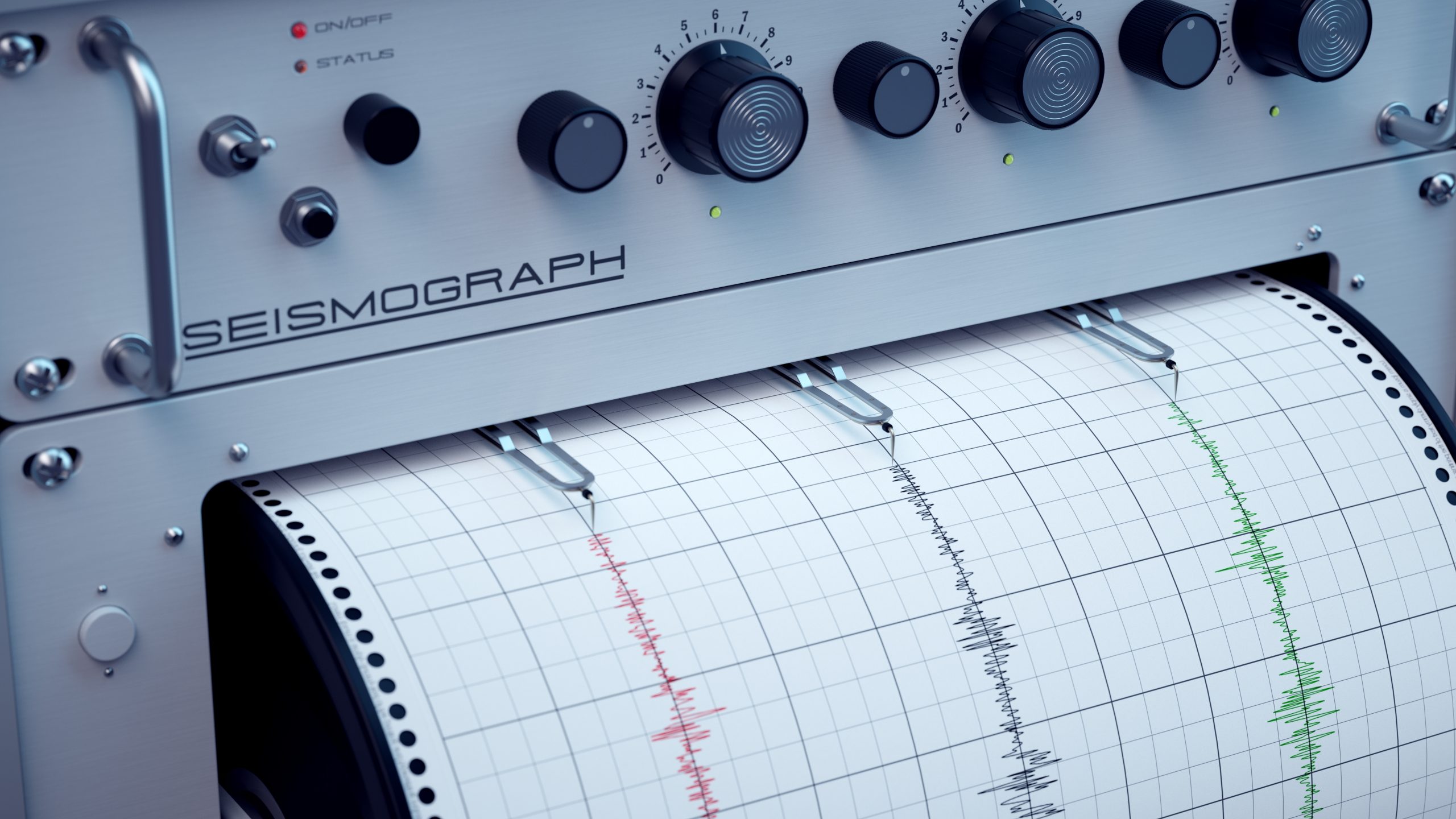
Kyle Haskett, PE
Associate
Kyle received both his Bachelor of Science in Architectural Engineering and Master of Science in Civil Engineering-Structural Emphasis from the University of Oklahoma. He is…
View Profile
Living in Oklahoma, earthquakes are not something to worry about, or at least they didn’t used to be. We saw a spike in earthquakes a few years back that started to become a bit worrisome, but the tectonic plates seem to have settled into place and we stopped having higher magnitude earthquakes. And yet after having written this blog, on February 3, 2024 we had a 5.1 magnitude earthquake here in Oklahoma according to USGS. After some quick internet research, it was the fifth largest earthquake to have originated in Oklahoma.
Oklahoma is not typically a seismic hot spot; other areas of the country are prone to higher magnitude earthquakes due to many factors. The major seismic factors include geological conditions, fault lines, and historical seismic data.
There has been a significant increase in our understanding of the effects of earthquakes – or “seismic loads” as we say in structural engineering ‒ on structures over the past several decades. Buildings have really only been designed with consideration of seismic loads over the past century. Seismic design has since been developed based on historical data from monitoring seismic activity, laboratory testing and research. In college, I was able to witness a series of small structures tested on a shake table as a part of another student’s thesis, and I have loved shake table testing ever since.
Over the past few decades, it seems like earthquakes are getting stronger and more frequent. Across the world, the strength and damage as a result of these earthquakes has been devastating. To qualify, it might also be that as a practicing structural engineer I have become more sensitive to earthquakes and their damage.
There are four seismic wave types: P-waves, S-waves, Rayleigh waves, and Love waves. A P-wave is also known as a compression wave because of the back-and-forth motion causing a pulling and pushing of the earth. An S-wave, or shear wave, will cause the earth or move vertically up and down. The Love wave, or Q wave, causes side-to-side ground motion perpendicular to direction of the wave. Lastly, Rayleigh waves create ground motion in an elliptical pattern resulting in both horizontal and vertical movement. Love waves and Rayleigh waves are surface waves and are the seismic loads that cause the most damage to structures.
The basic design philosophy for structures high seismic areas in a code-level seismic event is for a building to be ductile enough to prevent a collapse while allowing any occupants time to safely exit the structure. In other words, buildings in high seismic areas are designed that in the event of a “code level seismic event” (maximum ground acceleration with a 1% chance of being exceeded in 50 years), the building will be damaged in a controlled manner but preserve life safety. We, as structural engineers, are not designing seismic-proof buildings. We are not designing structures that do not suffer damage during an earthquake, or buildings that are guaranteed to be re-usable after a seismic event. It’s all about preserving life safety at the expense of controlled damage. As a colleague once said, “A well-designed seismic building saves lives, not buildings.”
Seismic loads are considered for all structures, but depending on the anticipated severity (largely a function of geographic location), they may or may not be the governing load in the design of the structure.
In structural engineering, we design buildings for gravity loads (forces acting downwards) and lateral loads (pushing/pulling forces). Lateral forces include wind and seismic. Both wind and seismic loads are calculated per code provisions at the onset of a project, and final designs are generally controlled by the worst case. So, in some areas of the country, like California, Oregon, Alaska, and other locations near fault lines, seismic loads will control over wind. In other areas, like the coast of Florida, wind loads will control over seismic.
The seismic design of a structure starts with the review of the site’s geological history, subgrade characteristics determined by the project’s geotechnical report, and seismic hazard maps in the governing code.
Structural engineers must design to meet a minimum standard set forth by our governing codes. The International Building Code (IBC) has specific chapters dedicated to seismic design, outlining requirements for various construction types, materials, and occupancy classifications. The IBC also references the American Society of Civil Engineers (ASCE) 7 standard, which goes into greater detail on how to design structures for high seismic forces.
ASCE 7 has provisions for the building category. The highest classification is IV, which applies to essential structures, such as hospitals, where the risk to life is highest if the structure under performs its design. These essential structures are required to be functional after seismic events and therefore are more strictly designed to resist the cyclical load effects of earthquakes. The lowest classification is I which is reserved mostly for agricultural and farming structures where the risk to human life is minimal.
The code also classifies buildings based on the several factors including
The seismic design category of the structure will dictate the seismic requirements that are specified by the code. ASCE 7 has provisions for all kinds of potential factors, including
The above lists are not exhaustive but do highlight the major and most common issues.
ASCE 7 requires that we design the lateral force resisting system main members to yield in specific locations to allow for the structure to dissipate the seismic energy through deformation. To achieve this, ASCE 7 requires that certain elements carrying lateral load to the main lateral force resisting systems be amplified to ensure the actual expected seismic load is distributed to the correct elements. All of this is in an effort to create a rigid path to transfer the seismic forces to a system that can absorb the loads by plastic deformation. A properly designed and detailed lateral system, whether it is concrete, steel or any other material, will be very ductile. The ductility allows the structure to have large deformations to dissipate the energy of the earthquake without rupturing while the ground is in motion. In a code-level event, the intent is that these members will be significantly deformed and damaged, but the building will not collapse.
In conclusion, we use decades of research, historical data, and testing to refine our standardized codes. The code minimums are designed to keep the public as safe as possible. Our structures will always be as safe as our current understanding of the effect of earthquakes on structures allows us to be. If you are ever in doubt about the safety of one of your structures, please contact your local structural engineer. I am sure they will be happy to help out and, if not, give us a call.

Are you passionate about the AEC industry? Do you want to use your talents with a group of the greatest engineers, landscape architects, technicians and support personnel in the industry? You've found the right place. Wallace is unique in the way we strive to make lives better for our clients, communities and employees. And we believe we have more fun doing our job than just about anyone else! The art of possibility. Discover it at Wallace.
Learn More
There are no comments.